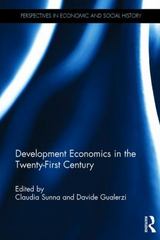Question 1 2 pts Tatu's income from farming is generally $450. This year, rains came late and on average the village lost $130 per family due to the bad timing. Tatu's realized income was $430. Under village insurance: 0 Since Tatu suffered a negative idiosyncratic shock, she is expected to receive some positive transfers from the insurance pool. 0 Tatu's consumption is $430 0 Tatu's consumption is $450 Since Tatu suffered a positive idiosyncratic shock, she is expected to give some positive transfers from the insurance pool D Question 2 2 pts 0 Savings cannot be accessed until a certain date or until a certain amount has been reached 0 None of the above 0 Savers commit to using the savings for only a specic (agreed upon) reason 0 Naive savers will manage to accumulate savings without problems _ Limited liability: O Increases the interest rate that banks charge 0 Protects borrowers from the consequence of bad shocks 0 All of the above 0 Reduces the incentive to work 0 None of the above .'-'_._ The difference in days of school attended between children enrolled in small class size classrooms and those enrolled in a large class size classroom is 10 days. The average attendance rate in large classes is 210 days (out of 240 possible days in the year). 0 Small class sizes cut absenteeism by 33% in this experimental setting. 0 Small class sizes increase enrollment by 33% in this cross-sectional study. 0 Because of selection bias (i.e., omitted variable bias), the average treatment effect is underestimated in this cross-sectional study. 0 Small class sizes cut absenteeism by 4.7% in this experimental setting. 0 Because of selection bias (i.e., omitted variable bias), the average treatment effect is overestimated in this experimental study. Question 5 2 pts MOO B - A 36 In the figure above, income is on the [ Select ] V axis and utility is in the [ Select ] axis.Consider the gure above. Suppose that utility is given by u = (/5 , where c is consumption and c = y, and the probability of a high income is p = g . Expected income is given by the value (write capital letter A, B, C, D, or E), and is equal to (write number with up to 1 decimal point). Without insurance, expected utility is given by (write capital letter A, B, C, D, or E), and is equal to utils (write number with up to 1 decimal point). With actuarially fair insurance, expected utility is given by (write capital letter A, B, C, D, or E), and is equal to (write number with up to 1 decimal point). Based on the figure above, what is your best guest of the probability of a good outcome occurring? O 0.2 O Impossible to tell O 0.8 O 0.5Consider the first column of the table below, from Dupas and Robinson (2012). They offered free savings accounts to microenterprises, like in Prina (2013). Some of these microentrepreneurs were bodas, or motorcycle taxi drivers. The constant term (not shown) in column 1 is 0.08 Active bank account usage ("first-stage") (1) (2) Panel A. Intention-to-Treat Estimates (ITT) Sampled for savings 0.41 0.40 account (0.05)** (0.06)*** Sampled for savings 0.06 account x Boda (0.11) Observations 250 250 The number of active users among bodas in the treatment group is 46%. O The number of active users in the treatment group is 49%. The number of active users in the treatment group is 41%. The number of active users among bodas in the control group is 40%. O None of the answersA sophisticated present biased person: 0 Seeks strategies to commit to savings 0 None of the above 0 All of the above 0 Is not naive Q Is more impatient now, but is willing to wait in the future















